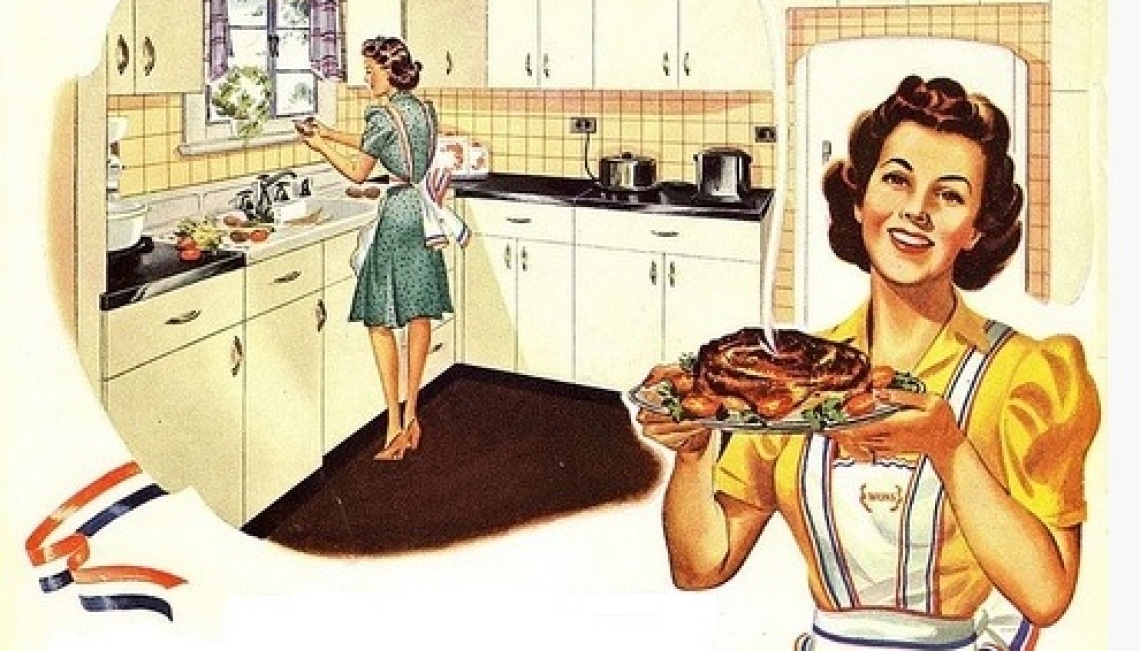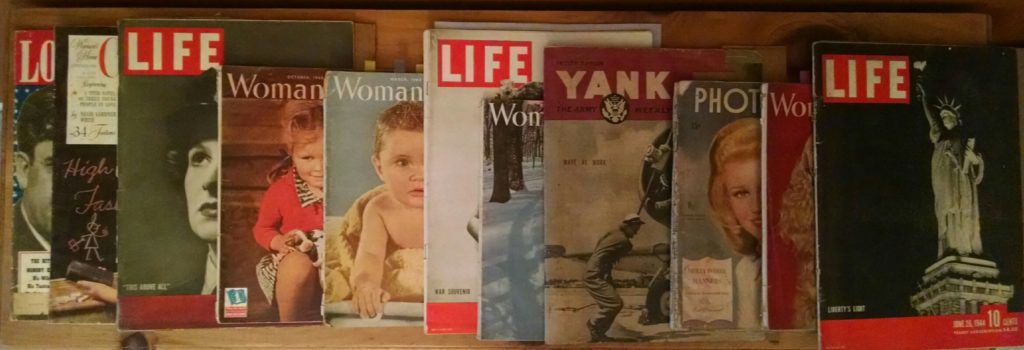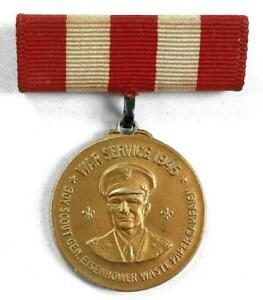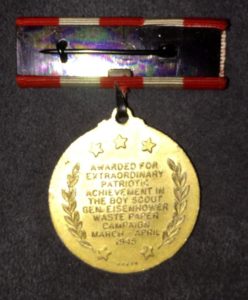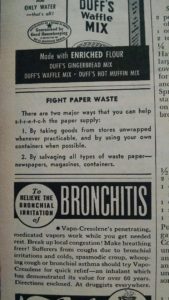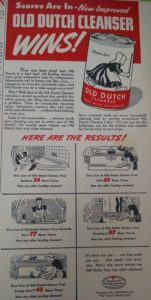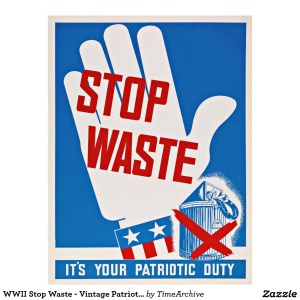 An overriding value of the WWII project is about avoiding waste. Whether the value was learned through the years of The Great Depression, or through government facilitation, it has always been clear to me that people alive during WWII were conscious about waste. Their efforts made them selfless in our minds and to them each following generation seems indulgent and living with a growing sense of entitlement.
An overriding value of the WWII project is about avoiding waste. Whether the value was learned through the years of The Great Depression, or through government facilitation, it has always been clear to me that people alive during WWII were conscious about waste. Their efforts made them selfless in our minds and to them each following generation seems indulgent and living with a growing sense of entitlement.
About waste in general, I turned to a valuable timeline found on the Association of Science – Technology Centers site.
1927: John M. Hammes, an architect in Racine, Wisconsin invents the InSinkErator® food disposer in his basement. It is patented in 1935, a year when only 52 models sold.
Why is that important, you may ask. Well…think about it. 52 garbage disposals installed; do you know of any modern homes without a disposal these days?
There was a real problem at the company ten years later, as their salesforce was still trying to figure out how to sell disposers. They just weren’t necessary for the small amount of kitchen waste produced.
After WWII though, 18 competitors of InSinkErator arrived on the scene. Times were changing.
In the early 1900s, Americans were estimated to waste 80-100 pounds of food per year, per person. Can you believe we are now tossing 20 pounds per person, per month? That’s 100 pounds in 1900, 240 pounds in 2015.
What has made this change? Availability. Convenience.
Convenience came in the form of several inventions:
1914 – Wax Paper
1928 – Cellophane
1929 – Aluminum Foil
1930 – Plastic (polyvinyl chloride) and polystyrene
1937 – Nylon, the world’s first synthetic fiber
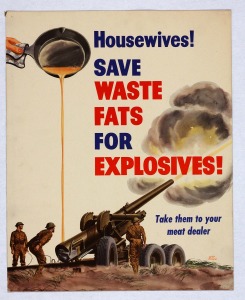
Before such inventions, we were only able to take what we could eat. We weren’t able to store food easily so we better judged what we really needed. I can give an example. Today I reluctantly tossed out a half full clamshell of grape tomatoes to the compost that had gone beyond their safe ripeness. I don’t do this absent-mindedly. I think about what I did that led to such waste. I realized it’s about size and portions (the American way!). The clamshell held about a 1 ½ pounds of grape tomatoes — roughly 60 of them. Realistically, there’s no way we would have eaten that many grape tomatoes. We have learned to buy for size, without thinking if it’s really what we need…value is in the bigger package, right Sam’s Club and Costco?
Speaking of packaging, I’m having trouble with the local grocers. They have a real problem with me not allowing them to wrap household items in plastic before putting in my bags with my other items. Never mind the fact that most of what we buy is wrapped in heavy plastic, slid inside a cardboard box. In the case of most household items (shampoo, soap, moisturizer, cleaning supplies), that are put on our bodies or countertops where we serve food, what is the problem if it comes near my food on its way home from the store?
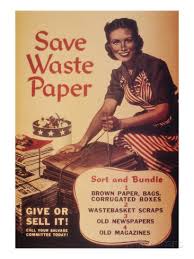
Anyway…back to waste. In 1947, J. Gordon Lippincott, an Industrial Designer of the time, made a comment on an observation he had made: “Our willingness to part with something before it is completely worn out is a phenomenon noticeable in no other society in history. It is soundly based on our economy of abundance. It must be further nurtured even though it runs contrary to one of the oldest inbred laws of humanity – the law of thrift.” That said in 1947, long, long before Apple phones are replaced every two years for the newer version with cooler features! Mr. Lippincott was actually referring to inventions such as disposable Bic pens and disposable Gillette razors. This type of waste just didn’t make sense.
Sadly, things only became worse as Americans became increasingly focused on consumerism.
1953: The American economy’s “ultimate purpose is to produce more consumer goods”. – Chairman of President Eisenhower’s Council of Economic Advisors.
“It is our job to make women unhappy with what they have.” – B. Earl Puckett, Allied Stores Corp.
1991: “Our economy is such that we cannot “afford” to take care of things: labor is expensive, time is expensive, money is expensive, but materials — the stuff of creation — are so cheap that we cannot afford to take care of them.” – Wendell Berry
1993: “We’re reminded a hundred times a day to buy things, but we’re not reminded to take care of them, repair them, reuse them, or give them away.” – Michael Jacobson, Center for the Study of Commercialism
By latest claims, Americans throw out 230,000,000 tons of trash (4.6 pounds per day) per person annually. Less than ¼ of that amount is recycled.
And back to food waste — it’s too much. 20 pounds per person, each month of food. Roughly 15% – 20% of what we buy we throw out.
Think about the additional waste of resources involved. According to author and food waste expert Jonathan Bloom, food waste is not just a moral issue, but also an environmental issue. “A tremendous amount of resources go into growing our food, processing, shipping, cooling and cooking it,” said Bloom. “Our food waste could represent as much as six percent of U.S. energy consumption.”
It comes down to winning the modern war against overabundance and consumerism.
Stores overstock. If the shelves or produce displays look empty we think there is something wrong with what’s left. No one wants to take the last head of broccoli.
Any produce slightly subpar is tossed before it even goes to market. The USDA standards of grading produce puts a farmer at loss. If something is a Grade 2, two-thirds of its market value is lost, even though taste and freshness is identical to a Grade 1. It’s all about aesthetics.
91% of consumers have tossed food for the reason it is past its ‘sell date’. There are no USDA health or safety standards on food expiration (except in the case of baby formula). The dates you see on food in a store is determined by manufacturer — someone who would have an interest in you tossing to buy again.
So, here we are in 2015…70 years since WWII and the food rules. ‘Living Green’ is popular…reduce, reuse, recycle feels like a hip concept to us. Don’t be fooled. The trend was a way of life, not a trend, until the end of WWII and we’re not even close to mastering it the way our grandparents did. This is one of those lessons we must hold on to.
Don’t buy more than you need. Use what you buy. Reuse or recycle what’s left of packaging, if you can’t avoid packaging completely. Or, as they use to say – Use it Up, Wear it Out, Make it Do, or Do Without!
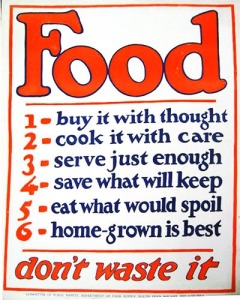
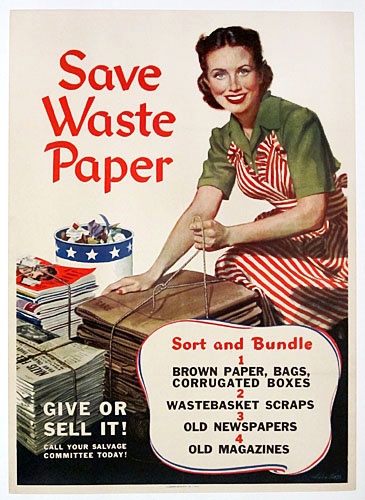
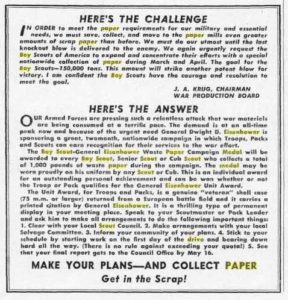 “In order to meet the paper requirements for our military and essential needs, we must save, collect, and move to the paper mills even greater amounts of scrap paper than before. We must do our utmost until the last knockout blow is delivered to the enemy. We again urgently request the Boy Scouts of America to expand and concentrate their efforts with a special nationwide collection of paper during March and April. The goal for the Boy Scouts – 150,000 tons. This amount will strike another potent blow for victory. I am confident the Boy Scouts have the courage and resolution to meet the goal.” – J.A. Krug, Chairman War Production Board.
“In order to meet the paper requirements for our military and essential needs, we must save, collect, and move to the paper mills even greater amounts of scrap paper than before. We must do our utmost until the last knockout blow is delivered to the enemy. We again urgently request the Boy Scouts of America to expand and concentrate their efforts with a special nationwide collection of paper during March and April. The goal for the Boy Scouts – 150,000 tons. This amount will strike another potent blow for victory. I am confident the Boy Scouts have the courage and resolution to meet the goal.” – J.A. Krug, Chairman War Production Board. 